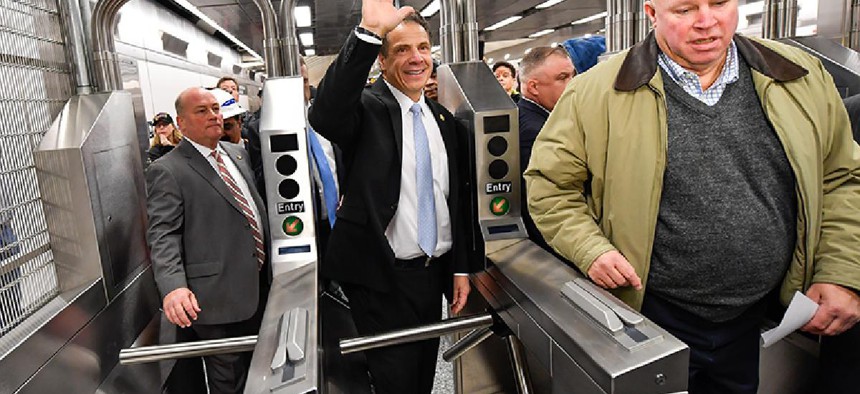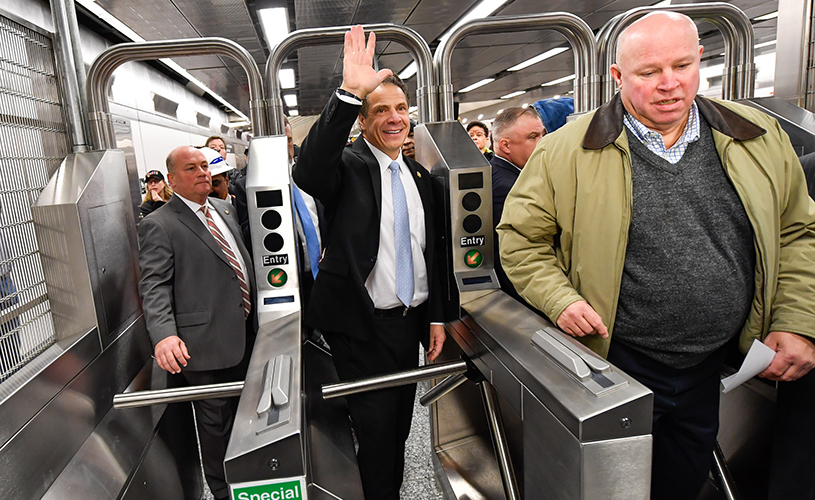
Gov. Andrew Cuomo takes the innaugural ride on the Second Ave. subway. (Darren McGee / Office of Governor Andrew Cuomo)
Last week, Gov. Andrew Cuomo sent a press release to "advance legislation to give the state control of the MTA board." This statement was met with wonderment on Twitter, as most thought it was widely understood that the state already does control the MTA board. So we felt obliged to help Cuomo out and give his press release a quick edit. Below is the actual press release, annotated – hover over the highlighted sections to see our notes.
–––––
Sent at 3:54 p.m. on Tuesday, June 20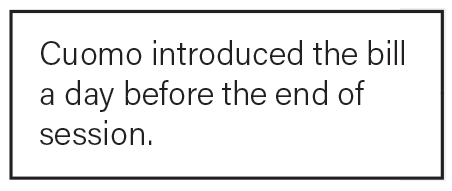 , from Gov. Andrew Cuomo’s press office
, from Gov. Andrew Cuomo’s press office
GOVERNOR CUOMO ADVANCES LEGISLATION TO GIVE STATE CONTROL OF MTA BOARD AND ADDRESS CURRENT CRISIS
LEGISLATION TO GIVE STATE CONTROL OF MTA BOARD AND ADDRESS CURRENT CRISIS
Governor Andrew M. Cuomo today advanced legislation to give New York State majority control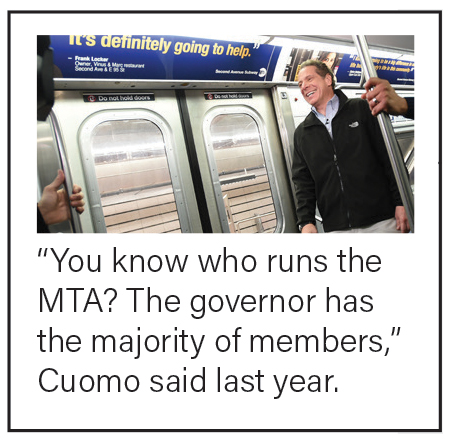 of the MTA and thus the responsibility and authority
of the MTA and thus the responsibility and authority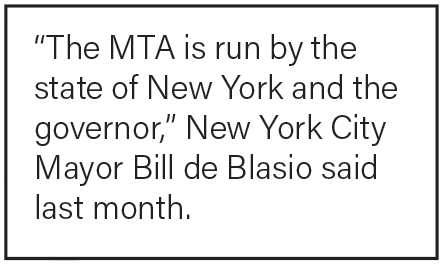 to address the current crisis.
to address the current crisis.
The legislation would add two additional state seats to the MTA Board appointed by the Governor and an additional vote for the Chairman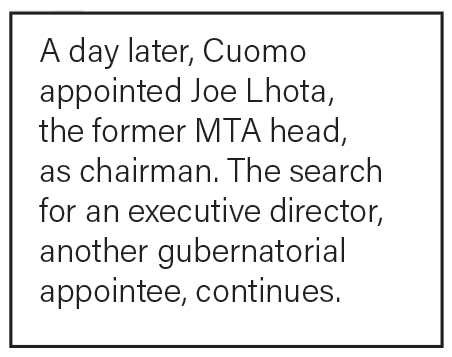 . Of the new Board’s total voting members, it would now give the state eight appointees and nine votes.
. Of the new Board’s total voting members, it would now give the state eight appointees and nine votes.
Currently, there is no voting majority on the MTA. New York State currently has six seats, New York City has four seats and Nassau, Suffolk, Westchester, Dutchess, Orange, Rockland, and Putnam have the balance of the Board’s seats for a total of 14 voting seats.
currently has six seats, New York City has four seats and Nassau, Suffolk, Westchester, Dutchess, Orange, Rockland, and Putnam have the balance of the Board’s seats for a total of 14 voting seats.
The MTA's organizational structure was originally created in 1965. While the Board included all governments in the MTA region it also divided responsibility among the Authority's various political leaders. That created a Board without accountability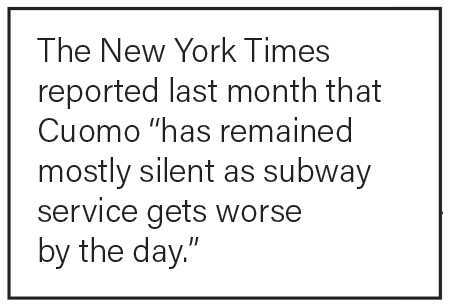 , which requires constant coalition building on the board to effect action. Finger pointing has been standard operating procedure for decades.
, which requires constant coalition building on the board to effect action. Finger pointing has been standard operating procedure for decades.
Statement from Governor Cuomo:
"The MTA is in a state of crisis. Historic underfunding leaves it with obsolete equipment going back to the 1940s. The bureaucracy is dysfunctional. The recent Penn emergency track closures on July 8 will be the proverbial straw that breaks the camel’s back. The July 8 LIRR and New Jersey Transit cancellations will drive more people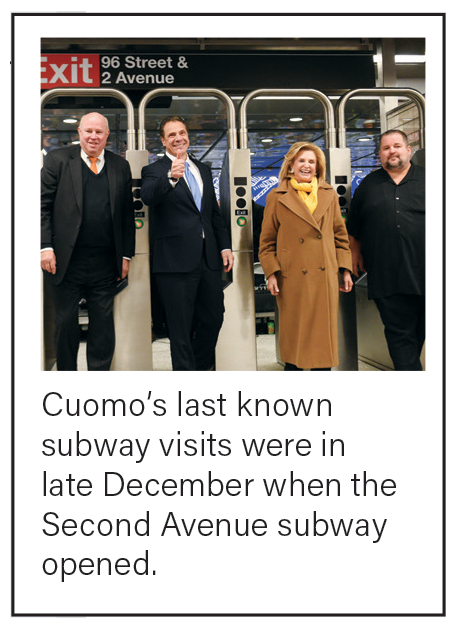 into the subway system, in the middle of the summer. There is no quick or small fix for the MTA. We are advancing $32 billion for the MTA capital plan
into the subway system, in the middle of the summer. There is no quick or small fix for the MTA. We are advancing $32 billion for the MTA capital plan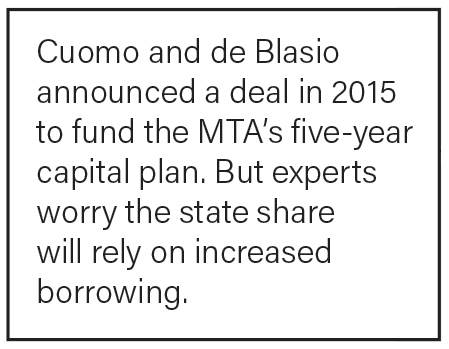 – an historic amount – but it must be implemented: new cars purchased, new signals installed, new equipment acquired and new personnel hired. We are conducting an international conference next week for the best vendors.
– an historic amount – but it must be implemented: new cars purchased, new signals installed, new equipment acquired and new personnel hired. We are conducting an international conference next week for the best vendors.
"The MTA Board structure assumed regional participation in the metropolitan area’s transportation systems but left no one in charge
but left no one in charge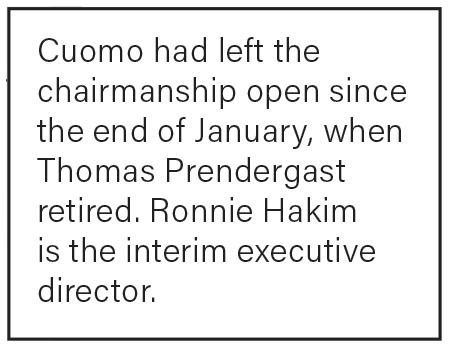 . While New York State has six of the 14 voting seats – that is not control. There is no transformative plan that will require major change and possibly more investment that will be agreed upon by the various separate political bodies with competing needs. Complex projects don’t get effectively managed by unanimous agreement of large political bureaucracies. We don’t have 10 years to do this. The state will dedicate itself to the task and assume responsibility, but the state needs the authority.
. While New York State has six of the 14 voting seats – that is not control. There is no transformative plan that will require major change and possibly more investment that will be agreed upon by the various separate political bodies with competing needs. Complex projects don’t get effectively managed by unanimous agreement of large political bureaucracies. We don’t have 10 years to do this. The state will dedicate itself to the task and assume responsibility, but the state needs the authority.
"The state has taken a similar approach at the Port Authority. New York State is responsible for LGA and JFK Airports’ reconstruction. The state is responsible for oversight of the Tappan Zee Bridge, the Kosciusko Bridge, and many more. The state does not shy away from challenges, but we need the ability and authority to perform. ..."

